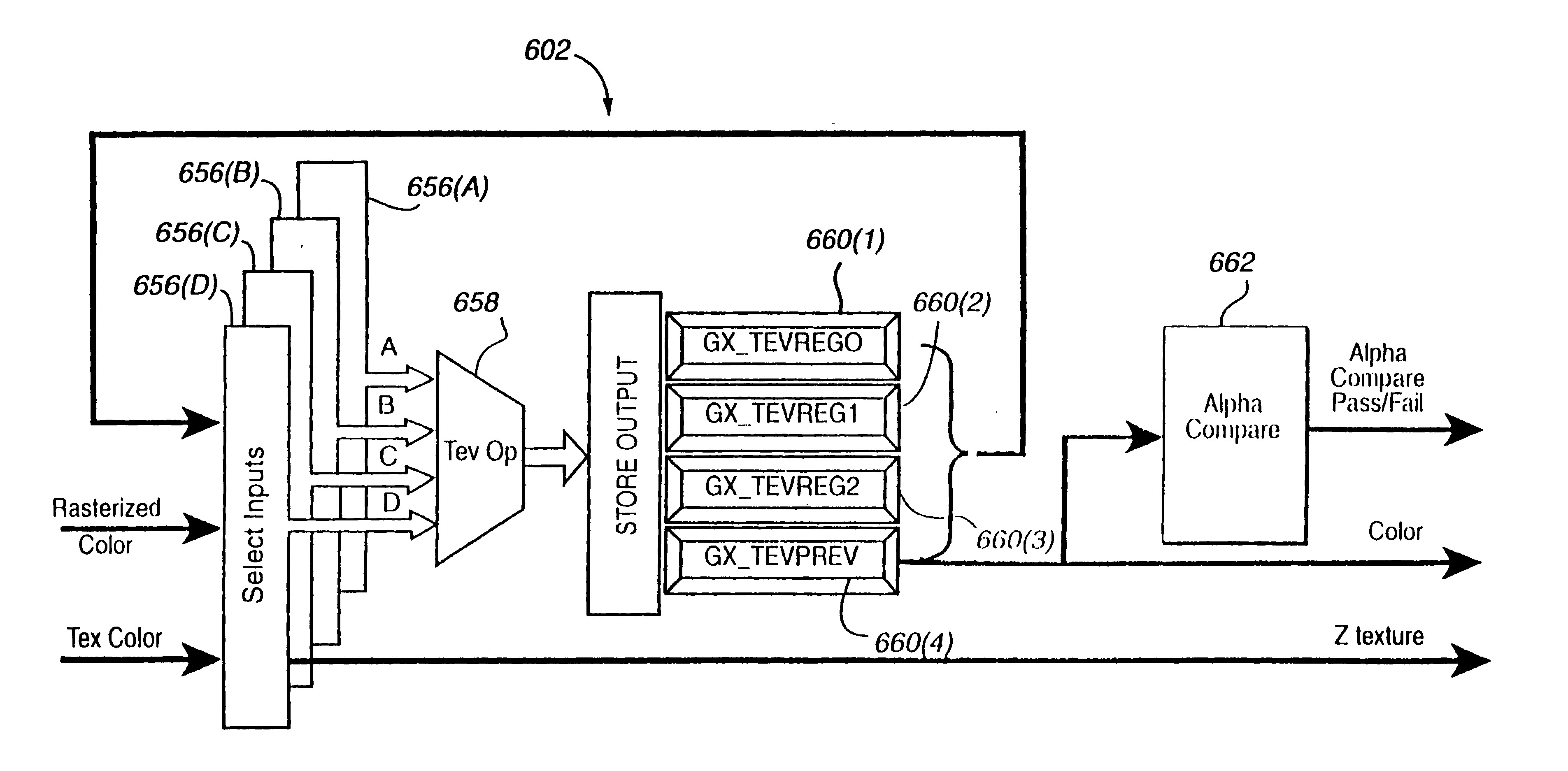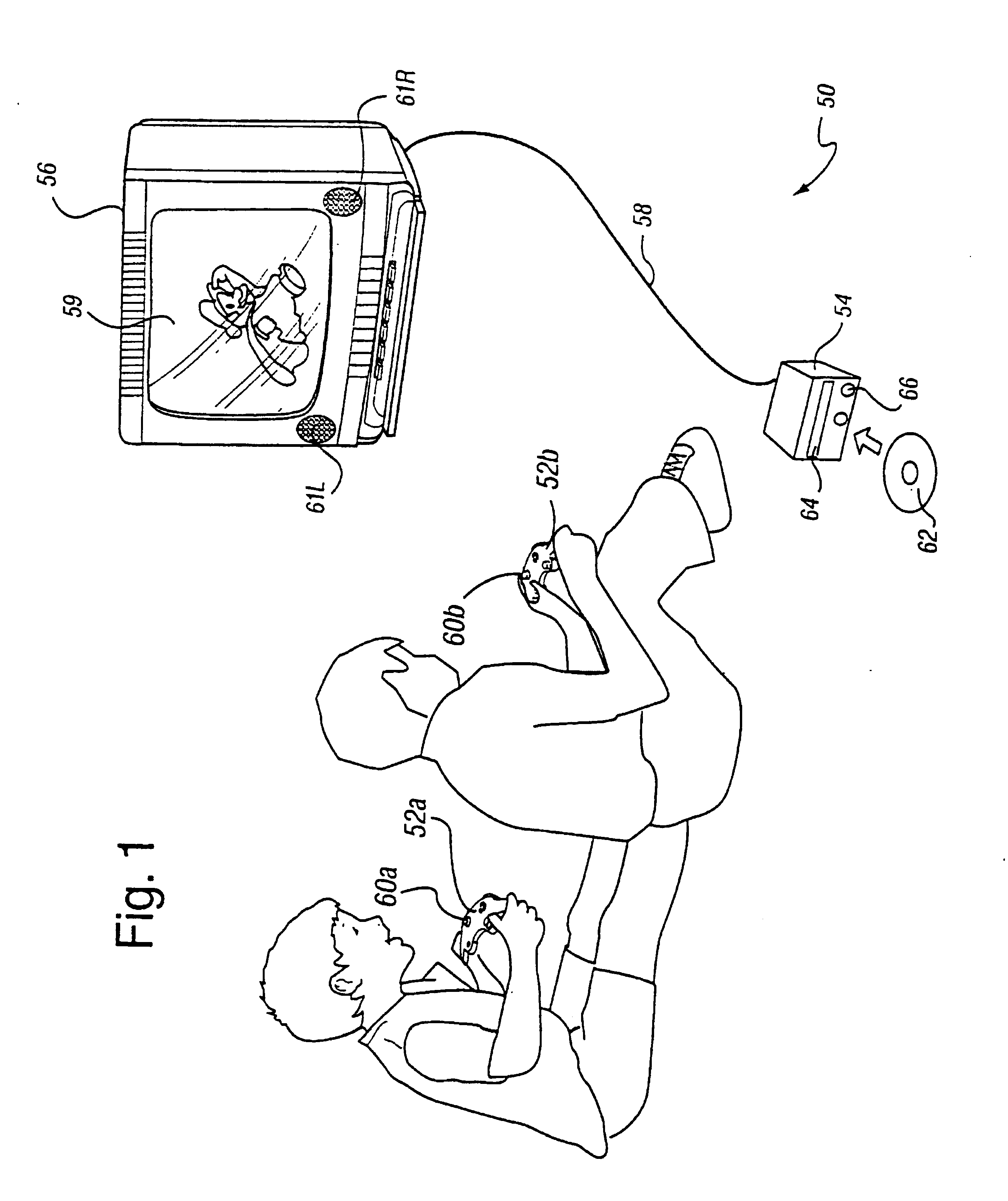Recirculating shade tree blender for a graphics system
a graphics system and blender technology, applied in the field of computer graphics, can solve the problems of complex computer graphics generation, low chip-footprint, and the inability of most of us to interact with the computer doing the graphics generation, so as to minimize the processing time per stage, reduce the cost, and reduce the effect of processing tim
- Summary
- Abstract
- Description
- Claims
- Application Information
AI Technical Summary
Benefits of technology
Problems solved by technology
Method used
Image
Examples
example graphics
Pipeline
[0064]FIG. 4 shows a more detailed view of an example 3D graphics processor 154. 3D graphics processor 154 includes, among other things, a command processor 200 and a 3D graphics pipeline 180. Main processor 110 communicates streams of data (e.g., graphics command streams and display lists) to command processor 200. Main processor 110 has a two-level cache 115 to minimize memory latency, and also has a write-gathering buffer 111 for uncached data streams targeted for the graphics and audio processor 114. The write-gathering buffer 111 collects partial cache lines into full cache lines and sends the data out to the graphics and audio processor 114 one cache line at a time for maximum bus usage.
[0065]Command processor 200 receives display commands from main processor 110 and parses them—obtaining any additional data necessary to process them from shared memory 112. The command processor 200 provides a stream of vertex commands to graphics pipeline 180 for 2D and / or 3D processi...
examples
[0384]This page shows some samples of the Texture Environment (TEV) settings.[0385]One Rasterized Color[0386]e.g. Polygons with vertex colors[0387]e.g. Vertex lighting[0388]This configuration passes rasterized color channel directly by using PASSCLR operation. No texture is used.[0389] / / One Rasterized Color[0390] / / The channel COLOR0A0 is supposed to have lit color.[0391]GXSetNumTevStages(1);[0392]GXSetTevOrder([0393]GX_TEVSTAGE0,[0394]GX_TEXCOORD_NULL,[0395]GX_TEXMAP_NULL,[0396]GX_COLOR0A0);[0397]GXSetTevOp(GX_TEVSTAGE0, GX_PASSCLR);[0398]One Texture[0399]e.g. Simple texture mapping
[0400]This configuration is used for displaying the texture color directly. No rasterized color can be used.[0401] / / One Texture[0402] / / A texture should be loaded to GX_TEXMAP0.[0403] / / An appropriate texcoord generation should be set to GX_TEXCOORD0.[0404]GXSetNumTevStages(1);[0405]GXSetTevOrder([0406]GX_TEVSTAGE0,[0407]GX_TEXCOORD0,[0408]GX_TEXMAP0,[0409]GX_COLOR_NULL);[0410]GXSetTevOp(GX_TEVSTAGE0, ...
PUM
 Login to View More
Login to View More Abstract
Description
Claims
Application Information
 Login to View More
Login to View More - R&D
- Intellectual Property
- Life Sciences
- Materials
- Tech Scout
- Unparalleled Data Quality
- Higher Quality Content
- 60% Fewer Hallucinations
Browse by: Latest US Patents, China's latest patents, Technical Efficacy Thesaurus, Application Domain, Technology Topic, Popular Technical Reports.
© 2025 PatSnap. All rights reserved.Legal|Privacy policy|Modern Slavery Act Transparency Statement|Sitemap|About US| Contact US: help@patsnap.com



